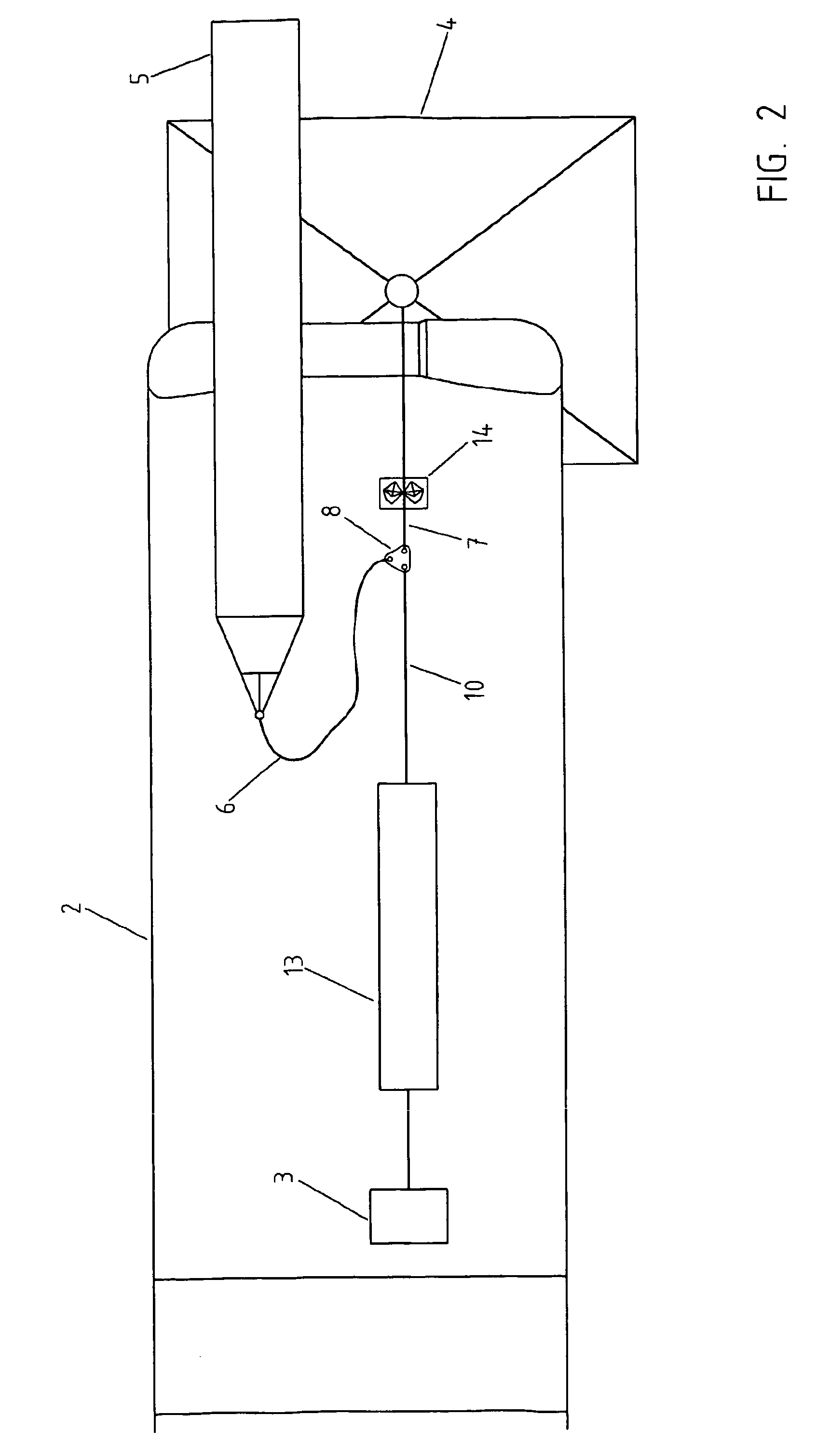Method for underwater transportation and installation or removal of objects at sea
a technology for underwater transportation and installation or removal of objects, applied in underwater structures, artificial islands, buoys, etc., can solve the problems of unfit, inadequate or very expensive conventional methods, and large dimensions and weight of objects to be installed or removed from offshore sites, so as to improve weather criteria, reduce operation costs, and be less weather-sensitive
- Summary
- Abstract
- Description
- Claims
- Application Information
AI Technical Summary
Benefits of technology
Problems solved by technology
Method used
Image
Examples
Embodiment Construction
[0021]FIG. 1 shows the start of the operation according to the invention. The object 4 is being lifted through the surface 1 into the sea in sheltered waters after having been lifted off the deck of a vessel or transportation barge by a crane vessel 12. The object will be connected to the lower part of the suspension arrangement 7 and hung off in shark jaws at the stern of the towing vessel 2. The lifting wire from the crane vessel is then disconnected from the object.
[0022]FIG. 2 shows the object 4 hanging just beneath the stern of the towing vessel 2, hung off in the shark jaws 14. The buoyancy unit 5 is lying on deck of the vessel and is connected to the tri-plate 8. The towing winch wire 10, running from the towing winch 3 via a heave compensator 13 on deck, is also connected to the tri-plate.
[0023]FIGS. 3A–F show the launch of the buoyancy unit 5 from the towing vessel 2 and the subsequent object 4 weight transfer from the towing winch 3 to the buoyancy unit. In FIGS. 3A–C the ...
PUM
 Login to View More
Login to View More Abstract
Description
Claims
Application Information
 Login to View More
Login to View More - R&D
- Intellectual Property
- Life Sciences
- Materials
- Tech Scout
- Unparalleled Data Quality
- Higher Quality Content
- 60% Fewer Hallucinations
Browse by: Latest US Patents, China's latest patents, Technical Efficacy Thesaurus, Application Domain, Technology Topic, Popular Technical Reports.
© 2025 PatSnap. All rights reserved.Legal|Privacy policy|Modern Slavery Act Transparency Statement|Sitemap|About US| Contact US: help@patsnap.com



